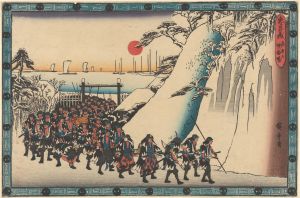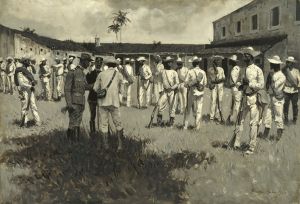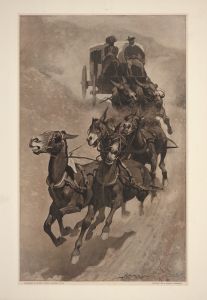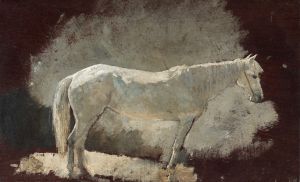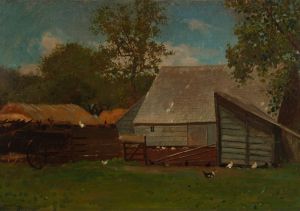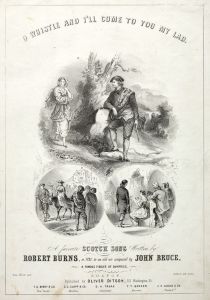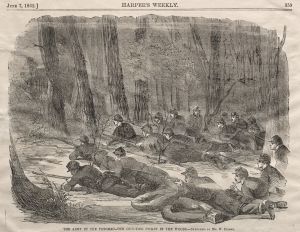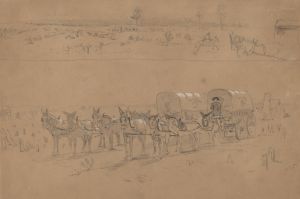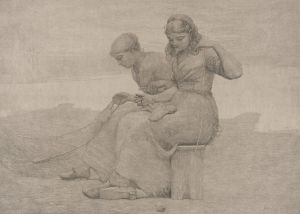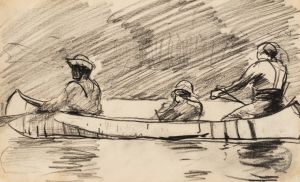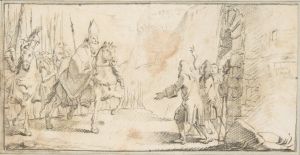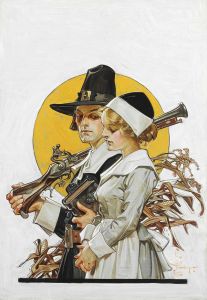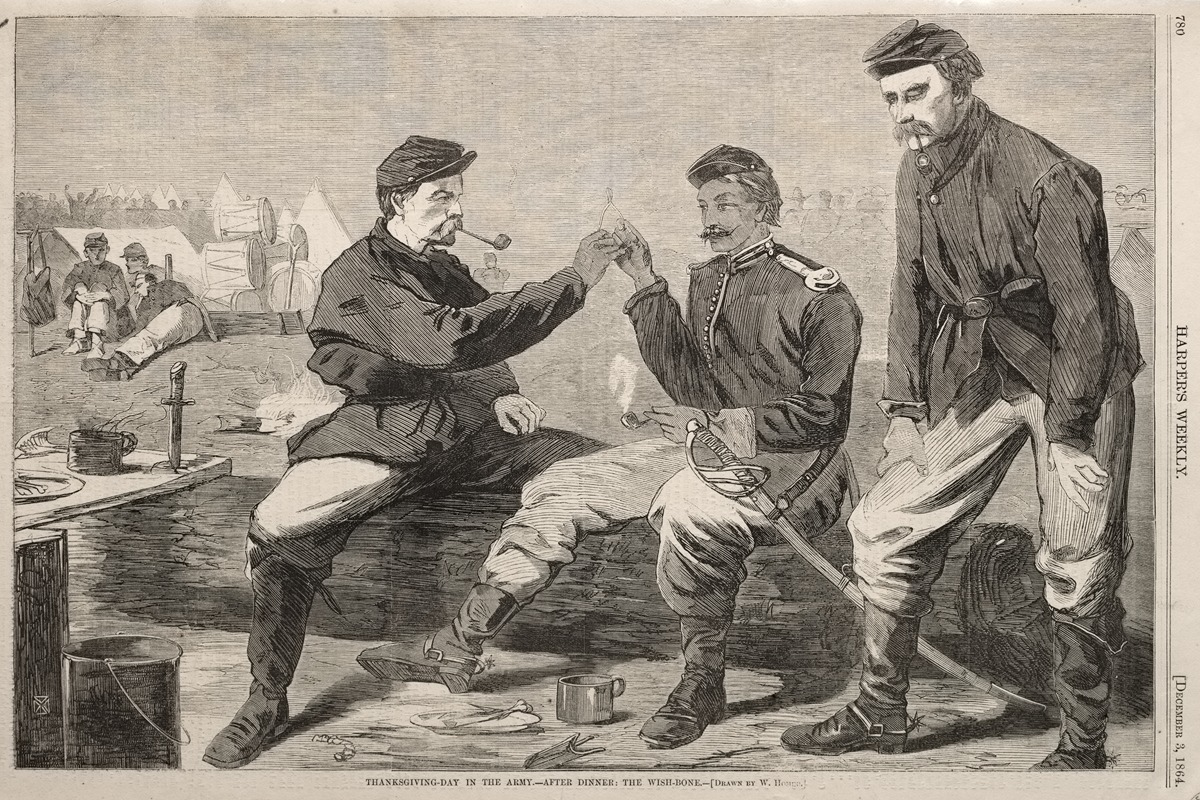
Thanksgiving Day in the Army – After Dinner; The Wish-Bone
A hand-painted replica of Winslow Homer’s masterpiece Thanksgiving Day in the Army – After Dinner; The Wish-Bone, meticulously crafted by professional artists to capture the true essence of the original. Each piece is created with museum-quality canvas and rare mineral pigments, carefully painted by experienced artists with delicate brushstrokes and rich, layered colors to perfectly recreate the texture of the original artwork. Unlike machine-printed reproductions, this hand-painted version brings the painting to life, infused with the artist’s emotions and skill in every stroke. Whether for personal collection or home decoration, it instantly elevates the artistic atmosphere of any space.
"Thanksgiving Day in the Army – After Dinner; The Wish-Bone" is a painting by the renowned American artist Winslow Homer. Created in 1864, this work is part of Homer's series of illustrations that depict scenes from the American Civil War. Homer, who was an artist-correspondent for Harper's Weekly during the war, used his experiences and observations to create artworks that captured the everyday life of soldiers and the impact of the war on American society.
The painting portrays a group of Union soldiers gathered together after their Thanksgiving meal. Central to the composition is the traditional act of breaking the wishbone, a custom that symbolizes hope and good fortune. This scene reflects the soldiers' attempts to maintain a sense of normalcy and camaraderie amidst the harsh realities of war. The setting is informal and intimate, emphasizing the soldiers' shared experience and the brief respite from the conflict.
Homer's work is characterized by its attention to detail and the ability to convey emotion through composition and subject matter. In "Thanksgiving Day in the Army – After Dinner; The Wish-Bone," he uses these skills to highlight the humanity of the soldiers. The painting captures a moment of levity and tradition, contrasting with the backdrop of war. The soldiers are depicted in various poses, some engaged in conversation, others focused on the wishbone, creating a dynamic and lively scene.
The painting is significant not only for its artistic merit but also for its historical context. Thanksgiving during the Civil War was a time for reflection and gratitude, even as the nation was divided. President Abraham Lincoln had declared Thanksgiving a national holiday in 1863, and the celebration in the army camps served as a reminder of home and the values for which the soldiers were fighting.
Winslow Homer is considered one of the foremost American artists of the 19th century, and his Civil War works are particularly noted for their realism and emotional depth. His ability to capture the essence of the American experience during this tumultuous period has made his paintings valuable historical documents as well as significant works of art.
"Thanksgiving Day in the Army – After Dinner; The Wish-Bone" is an example of Homer's skill in portraying the human side of war. It offers insight into the lives of soldiers and the cultural practices that provided comfort and continuity during a time of great upheaval. The painting remains an important piece in understanding both the history of Thanksgiving in America and the personal experiences of those who lived through the Civil War.





